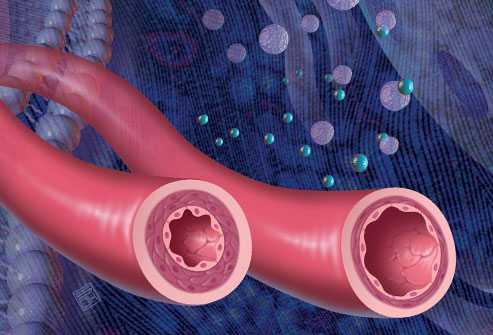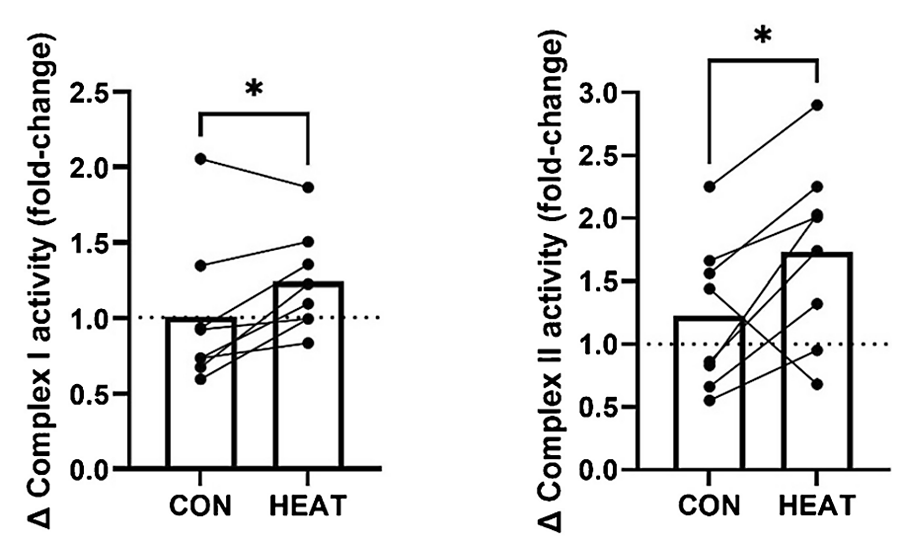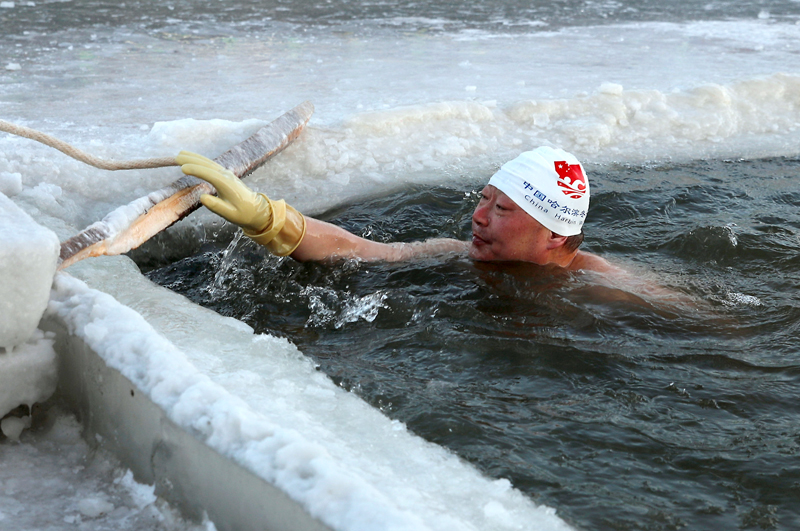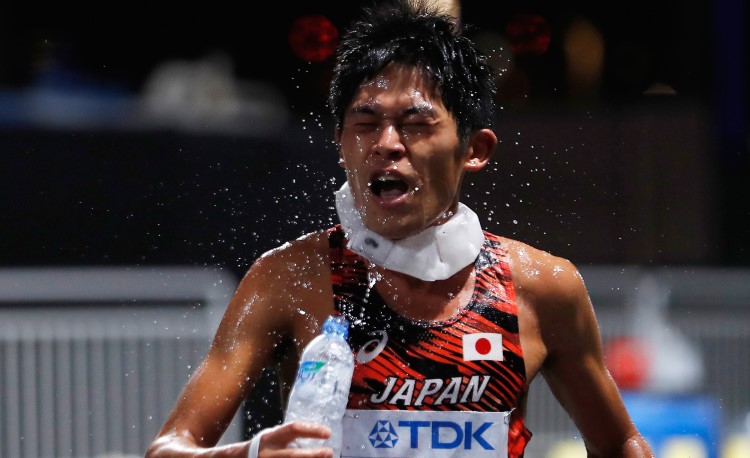You are viewing 1 of your 1 free articles. For unlimited access take a risk-free trial
Endurance performance: feel the heat!
Can higher temperatures and warm muscles help improve the endurance benefits of a training session? SPB looks at intriguing new research…
Athletes know that endurance training brings about favorable adaptations in the muscles involved, allowing them to perform harder for longer as their fitness gains accrue. But what exactly happens within exercising muscles to bring about these positive changes? We know that the physiological and chemical stress of exercise can activate the production of muscle cell signalling molecules and help ‘activate’ genes that are involved with the production of enzymes needed to release energy in the presence of oxygen (aerobic metabolism)(1). We also know that this stress can switch on signalling to increase number of mitochondria (aerobic energy factories) within muscle cells, increasing their ability to use oxygen to produce energy for exercise(2). But did you know that recent evidence points to a role for heat?
Hot topic for training
In previous and highly recommended SPB article by Rick Lovett, Rick looked at some of the early evidence suggesting that training in a hot environment seems to increase endurance training adaptations compared to the same training stimulus in cold conditions. In summary, this article highlighted research showing that cyclists who worked out for 100 minutes a day for ten days on stationary bicycles in a very hot room (40°C, 50% relative humidity) increased their maximum aerobic power measures by 5% compared to a control group who continued training in normal heat(3). Likewise, elite rowers who trained for 90 minutes a day at 40°C improved their 2000m performance times compared to a control group who performed the same training at 20°C(4).
Around this time, one theory for these observations was that exercising in the heat might produce extra training adaptations via an effect known as ‘arterial flow-mediated dilation’ (see figure 1)(5). This effect is known to increase blood flow (always a good thing for muscles!). Evidence that flow-mediated dilation might be playing a key role in improving training adaptation came from a 2015 study suggesting that time spent in a sauna can drastically reduce the risk of a fatal heart attack(6). The study tracked 2315 middle-aged Finnish men for an average of 21 years, and found that those who took saunas four or more times a week had only about a 40% the risk of dying of heart disease than those who took one or fewer saunas per week.
Figure 1: Flow-mediated dilation effect

Muscle heat matters
However, the story doesn’t end there because other studies – including some very recent research – suggests that additional heat itself in muscle tissue undergoing training can help bring about increases in aerobic enzymes and mitochondrial density (ie the numbers of mitochondria per unit volume of muscle). Heat-induced stimulation of increased mitochondrial density has not only been shown in the lab(7), but also in animals and humans who were given repeated bouts of locally-applied heat stress(8,9).
Coming right up to date, researchers found that in endurance-trained males, three weeks of endurance training performed under moderate whole-body heat stress (33°C) increased levels of a key aerobic enzyme (citrate synthase) in the quadriceps muscles of the thigh whereas matched training at 18°C did not(10). Likewise, other recent research has found that applying heat stress directly to muscles during exercise helped to activate genes that produce a key signalling factor for mitochondrial growth (known as ‘mitochondrial transcription factor A’ or TFAM for short)(11).
Together, these findings raise the fascinating possibility that undertaking chronic exercise training with heat stress applied locally to working muscles to elevate muscle temperature above typical exercising values might be able to boost mitochondria synthesis, thereby improving training adaptations in endurance athletes. But is this actually the case? Unfortunately, the role of elevated muscle temperature during exercise for boosting mitochondrial adaptation to training has not been studied in humans to date, but new research by a team of New Zealand scientists at Sports Performance Research Institute in Auckland has just been published and makes for fascinating reading(12).
New research
In this study, which was published in the Pflügers Archiv of the European Journal of Physiology, the scientists wanted to investigate the effects of elevating muscle temperature during exercise in temperate conditions by the application of mild, local heat stress from a wired heat pad on mitochondrial adaptations to endurance training.
Eight recreationally-trained males were recruited for the study, all of whom were regularly engaged in endurance exercise such as running and/or cycling. In the run up to the 3-week intervention period, all the athletes reported to the laboratory on two occasions - once for an incremental exercise test to establish baseline fitness levels to determine training zones, and once for biopsies of the quadriceps muscle to determine the mitochondrial density in the muscle fibres. In addition, levels of key enzymes involved in aerobic energy production were also measured.
Following these initial test, each participant undertook three weeks of supervised cycling exercise training in the laboratory in temperate conditions (18°C), during which mild local heat stress (around 40°C) was applied to the upper-leg musculature of one leg during all training sessions. This heat was applied by use of a wired heat pad. Meanwhile the other leg had no heat applied. To avoid any bias of dominant/non-dominant leg choice, the heat pads were applied randomly but evenly in this respect.
Study design and training
The intervention lasted for three weeks with five x sessions per week - 15-sessions in total (see figure 1 for overview of the study design). The two-legged cycle training sessions involved applying mild local heat stress to the upper-leg muscles of one leg (HEAT) using a wired heat pad with the other leg serving as the non-heated, exercising control (CON). This method elevated the quad muscle temperatures of the heated leg to around 2°C above that of the non-heated leg, whilst exposing the tissues of both legs to the same systemic environment and mechanical training stress. The actual training sessions each week carried out by the athletes are outlined in table 1 below. After the intervention, retesting was carried out to evaluate any changes in mitochondrial density and aerobic enzyme levels.
Figure 1: Schematic illustration of the study design
Related Files
Table 1: Training sessions over the 3-week intervention (5 per week)
|
Session number |
Type |
Session |
|
1 |
Threshold |
4–6 × 8 min at VT2 HR, 2-min recovery |
|
2 |
Moderate |
90 min at 95% of VT1 HR |
|
3 |
Heavy |
3 × 25 min at mid-point of VT1 and VT2 HR, 5-min recovery |
|
4 |
Moderate |
90 min at 95% of VT1 HR |
|
5 |
Severe |
6–10 × 3 min at ‘best effort’, 2-min recovery |
NB: HR = heart rate; VT = first ventilatory threshold; VT2 = second ventilatory threshold.
What they found
Once the data was analyzed, there were three key findings that emerged. Firstly, all the athletes experienced gains in markers of aerobic fitness – as you would expect since they had been following a program designed to do this. However, focussing on the heated leg/control leg differences, it seemed that training with a ‘heated’ leg did not seem to induce greater mitochondrial protein synthesis, or boost the enzymes associated with this process. By contrast, the second finding was that the application of local heat stress during cycling training did produce significant rises in the levels of key aerobic enzymes known as ‘complex-I and ‘complex-II’ in the heated leg (see figure 2). Since these enzymes play a key role in oxygen processing and energy liberation in muscle fibers, this finding was very relevant, and might help explain why endurance training in very hot conditions seems to produce increased training adaptations compared to training in moderate temperatures.
Figure 2: Changes in complex-I and complex-2 enzyme levels in muscle fibers

Practical implications for athletes
The researchers concluded that their result provided partial evidence for the ‘hot training effect’. While there were no extra gains in mitochondrial density in the hot legs, there were very significant increases in enzyme levels involved in aerobic metabolism. The researchers pointed out that with such a small sample of athletes (eight) and the difficult nature of accurately measuring mitochondrial protein expression, this might explain why they didn’t see mitochondrial density increases (something that could be overcome with a larger study size in the future). However, their findings overall still lend credence to the notion that hot weather training or techniques that raise muscle temperatures might help endurance adaptations.
How can endurance athletes apply these findings? Although there are still a number of question marks, there does seem to be a growing body of evidence that training with heat – more specifically, allowing the exercising muscles to become warmer than normal – helps improve the training adaptations from that session compared to training at normal temperatures. If you live in a hot climate, or regularly experience hot spells of weather therefore, the implication is that you might be able to take advantage of that heat by training in it. Of course, there are downsides to this, including the need to stay adequately hydrated and ensuring you don’t overheat – see this article.
For athletes who live in a more temperate climate, there’s good news too because the above study shows that simply warming and raising the temperature of the relevant muscles during exercise could achieve the same benefits. In fact, this might even be a better strategy, allowing only the relevant muscles to be warmed, while keeping the rest of the body cooler. For example, if you run on a spring day with an ambient temperature of say 17°C, wearing a pair of extra-warm thermal leggings (that you wouldn’t normally wear) will result in higher than normal leg muscle temperatures – ie what you want. You can then use cooling strategies for the upper body so that overall, you don’t feel excessively hot. Another example is the use of a winter wetsuit for warm-water training, which would most definitely result in raised muscle temperatures!
It’s early days and most athletes can experiment with this kind of intervention for free, so there’s little reason for athletes who wish to experiment with, not to. One caveat however is to keep these kind of ‘hot muscle’ workouts fairly short; although the extra heat will generate additional physiological stress in muscles (which is a good thing), you don’t want too much. Not only is there the risk of dehydration and overheating, sessions that are too demanding will make full recovery before the next training session much harder!
References
1. FASEB J 2016. 30:959–970
2. Science 2002. 296(349–352)
3. J Appl Physiol 2010; 109(4):1140-7 Oct
4. Eur J Appl Physiol. 2012 May;112(5):1827-37
5. Physiol Rev 2017. 97: 495–528, February 1; doi:10.1152/physrev.00014.2016
6. JAMA Intern Med. 2015 Apr;175(4):542-8
7. J Appl Physiol 2012. 112:354–361
8. J Appl Physiol 2018. 125:1447–1455
9. Am J Physiol Regul Integr Comp Physiol 2014. 307:R931–R943
10. Physiol Rep 2021. 9:e14849
11. Appl Physiol Nutr Metab 2021. 46:1545–1551
12. Pflugers Arch. 2024 Mar 6. doi: 10.1007/s00424-024-02939-8. Online ahead of print
Newsletter Sign Up
Testimonials
Dr. Alexandra Fandetti-Robin, Back & Body Chiropractic
Elspeth Cowell MSCh DpodM SRCh HCPC reg
William Hunter, Nuffield Health
Newsletter Sign Up
Coaches Testimonials
Dr. Alexandra Fandetti-Robin, Back & Body Chiropractic
Elspeth Cowell MSCh DpodM SRCh HCPC reg
William Hunter, Nuffield Health
Keep up with latest sports science research and apply it to maximize performance
Today you have the chance to join a group of athletes, and sports coaches/trainers who all have something special in common...
They use the latest research to improve performance for themselves and their clients - both athletes and sports teams - with help from global specialists in the fields of sports science, sports medicine and sports psychology.
They do this by reading Sports Performance Bulletin, an easy-to-digest but serious-minded journal dedicated to high performance sports. SPB offers a wealth of information and insight into the latest research, in an easily-accessible and understood format, along with a wealth of practical recommendations.
*includes 3 coaching manuals
Get Inspired
All the latest techniques and approaches
Sports Performance Bulletin helps dedicated endurance athletes improve their performance. Sense-checking the latest sports science research, and sourcing evidence and case studies to support findings, Sports Performance Bulletin turns proven insights into easily digestible practical advice. Supporting athletes, coaches and professionals who wish to ensure their guidance and programmes are kept right up to date and based on credible science.











